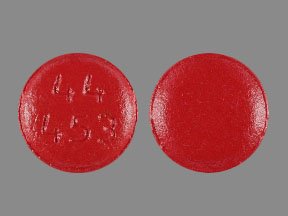Phenylephrine Dosage
Medically reviewed by Drugs.com. Last updated on Apr 21, 2025.
Applies to the following strengths: 10 mg/mL; 2.5 mg; 10 mg; 1.25 mg/0.8 mL; 100 mcg/mL; 5 mg/5 mL; 50 mg/250 mL-NaCl 0.9%; 100 mcg/mL-NaCl 0.9%; 0.8 mg/10 mL-NaCl 0.9%; 40 mg/250 mL-NaCl 0.9%; 200 mcg/5 mL-NaCl 0.9%; 100 mcg/mL-NaCl 0.9% preservative-free; 2.5 mg/5 mL; 80 mcg/mL-NaCl 0.9%; 20 mg/250 mL-NaCl 0.9%; 10 mg/250 mL-NaCl 0.9%; 10 mg/5 mL; 25 mg/250 mL-NaCl 0.9%; 30 mg/250 mL-NaCl 0.9%; 400 mcg/mL-NaCl 0.9%; 40 mg/250 mL-D5%; 0.4 mg/10 mL-NaCl 0.9%; 40 mcg/mL; 80 mcg/mL-NaCl 0.9% preservative-free; tannate 10 mg; tannate 7.5 mg/5 mL; 7.5 mg/5 mL; 10 mcg/mL-NaCl 0.9%; 0.8 mg/mL-NaCl 0.86%
Usual Adult Dose for:
Usual Pediatric Dose for:
Additional dosage information:
Usual Adult Dose for Hypotension
Perioperative dosing (patients undergoing surgery with neuraxial or general anesthesia):
Initial dose: 50 to 250 mcg by intravenous bolus (most common doses: 50 to 100 mcg)
Maintenance dose: 0.5 to 1.4 mcg/kg/min by intravenous continuous infusion (titrate to blood pressure goal)
Septic or Other Vasodilatory Shock:
0.5 to 6 mcg/kg/min by intravenous continuous infusion (titrate to blood pressure goal)
- No bolus
- Doses over 6 mcg/kg/min do not show significant incremental blood pressure increases.
Usual Adult Dose for Shock
Perioperative dosing (patients undergoing surgery with neuraxial or general anesthesia):
Initial dose: 50 to 250 mcg by intravenous bolus (most common doses: 50 to 100 mcg)
Maintenance dose: 0.5 to 1.4 mcg/kg/min by intravenous continuous infusion (titrate to blood pressure goal)
Septic or Other Vasodilatory Shock:
0.5 to 6 mcg/kg/min by intravenous continuous infusion (titrate to blood pressure goal)
- No bolus
- Doses over 6 mcg/kg/min do not show significant incremental blood pressure increases.
Usual Adult Dose for Nasal Congestion
10 mg orally every 4 hours
Maximum dose: 60 mg per 24 hours
Usual Pediatric Dose for Nasal Congestion
12 years and older: 10 mg orally every 4 hours
Maximum dose: 60 mg per 24 hours
Renal Dose Adjustments
Data not available
Liver Dose Adjustments
Liver cirrhosis patients may have decreased response to this drug.
- Consider larger doses in hepatically impaired patients.
Precautions
CONTRAINDICATIONS:
- Hypersensitivity to any of the ingredients
- Current use of a monoamine oxidase inhibitor (MAOI) or use within 14 days of stopping a MAOI.
Safety and efficacy of the oral formulations have not been established in patients younger than 12 years. Safety and efficacy of the intravenous formulations have not been established in patients younger than 18 years.
Consult WARNINGS section for additional precautions.
Dialysis
Hemodialysis: End stage renal disease (ESRD) on hemodialysis may have increased responsiveness to this drug; consider lower doses in these patients.
Peritoneal dialysis: Data not available
Frequently asked questions
More about phenylephrine
- Check interactions
- Compare alternatives
- Pricing & coupons
- Reviews (24)
- Drug images
- Latest FDA alerts (5)
- Side effects
- Patient tips
- During pregnancy
- Support group
- Drug class: decongestants
- Breastfeeding
- En español
Patient resources
- Phenylephrine drug information
- Phenylephrine (Intravenous) (Advanced Reading)
- Phenylephrine Tablets
- Phenylephrine Injection
- Phenylephrine Liquid
Other brands
Sudafed PE Congestion, Neo-Synephrine, Biorphen, Contac-D, ... +5 more
Professional resources
Other brands
Neo-Synephrine, Biorphen, Vazculep
Related treatment guides
See also:
Further information
Always consult your healthcare provider to ensure the information displayed on this page applies to your personal circumstances.


